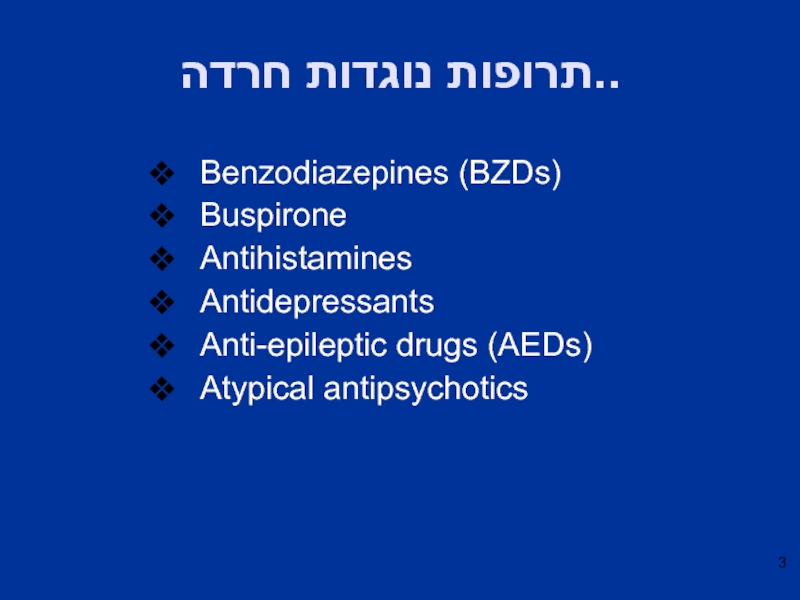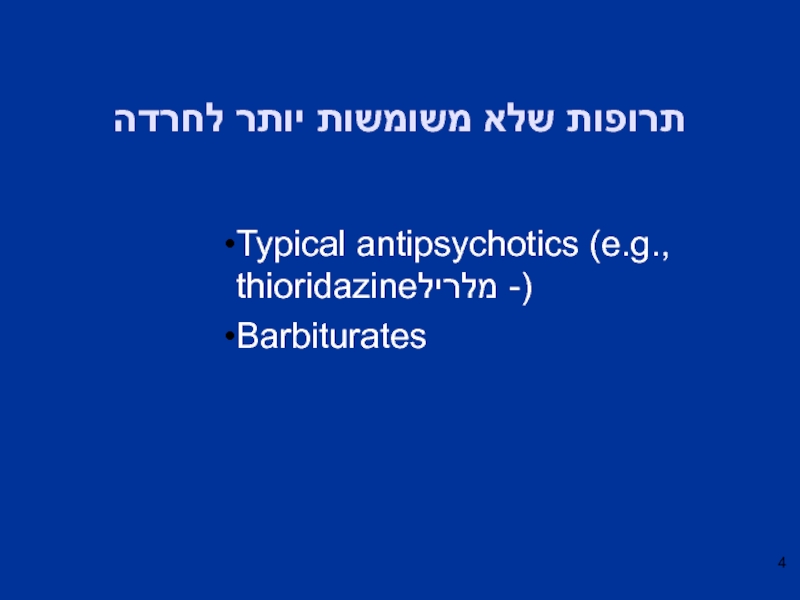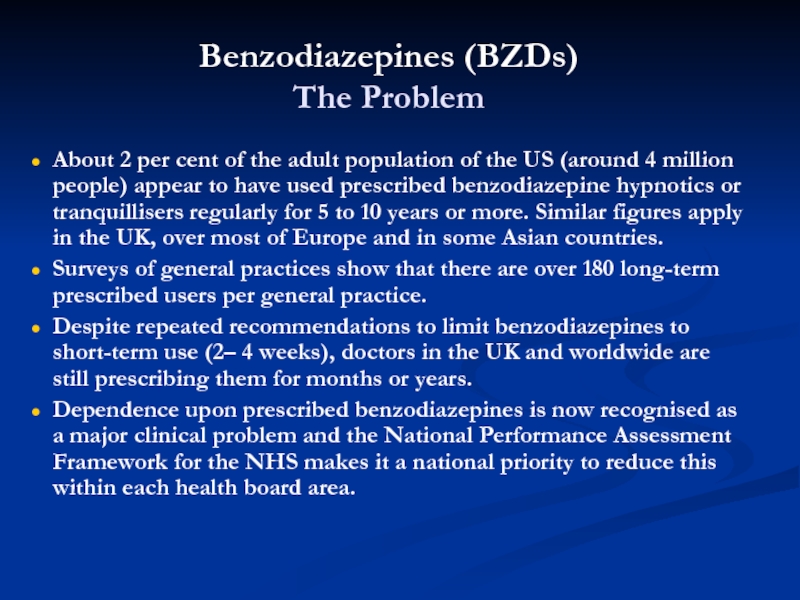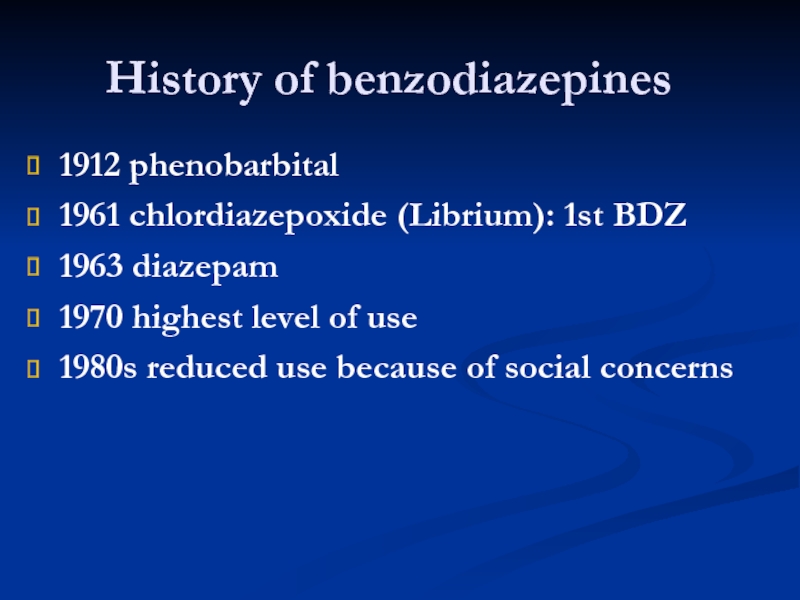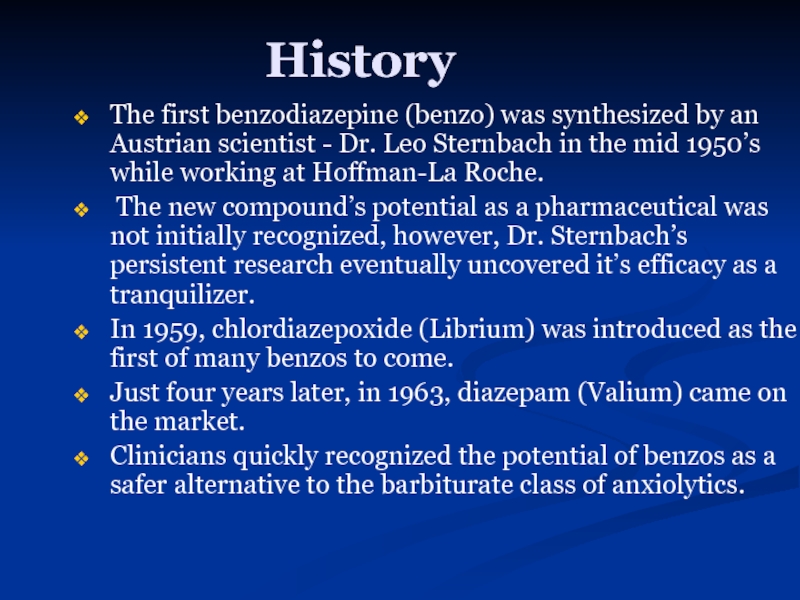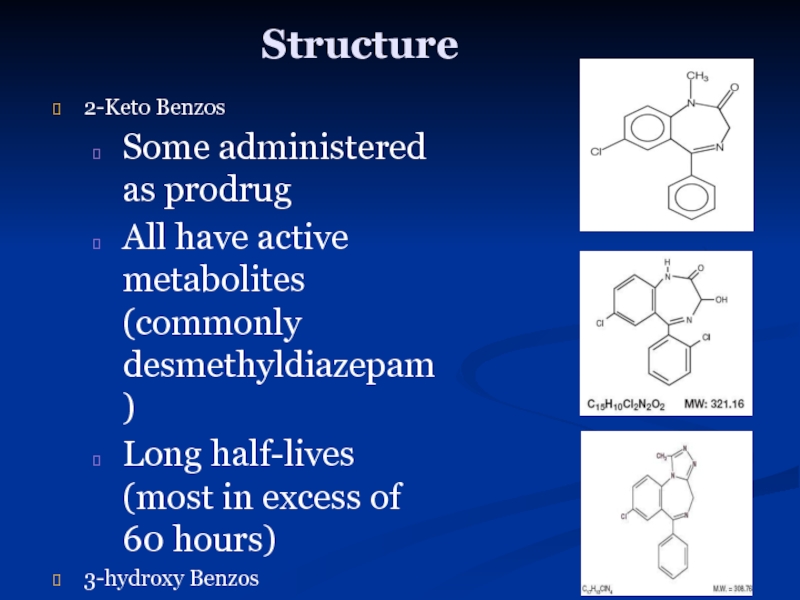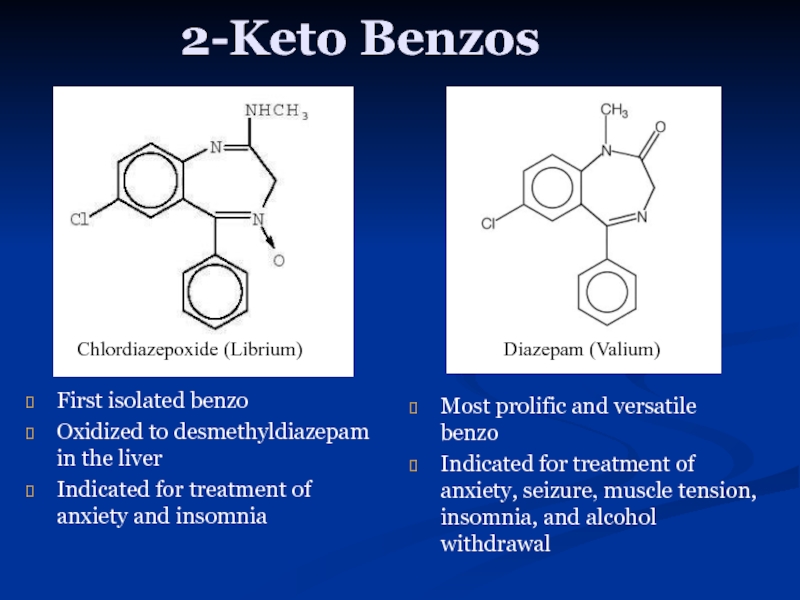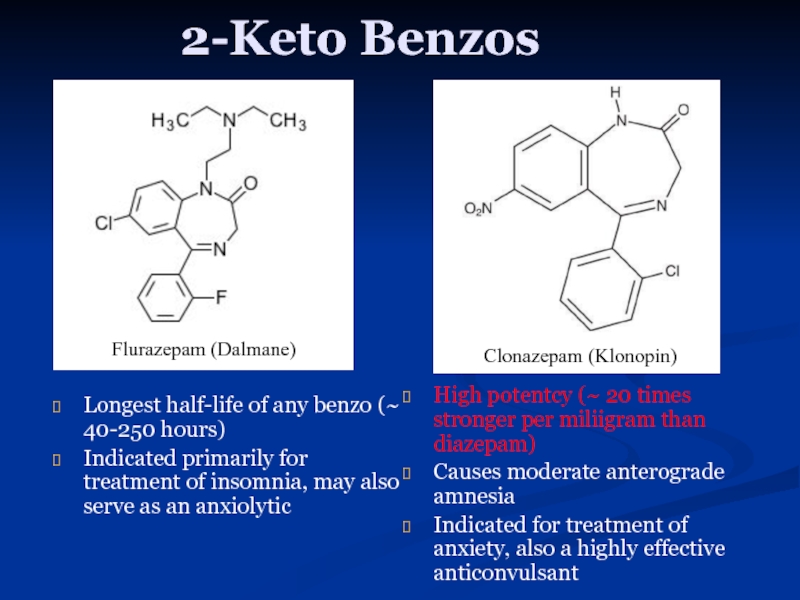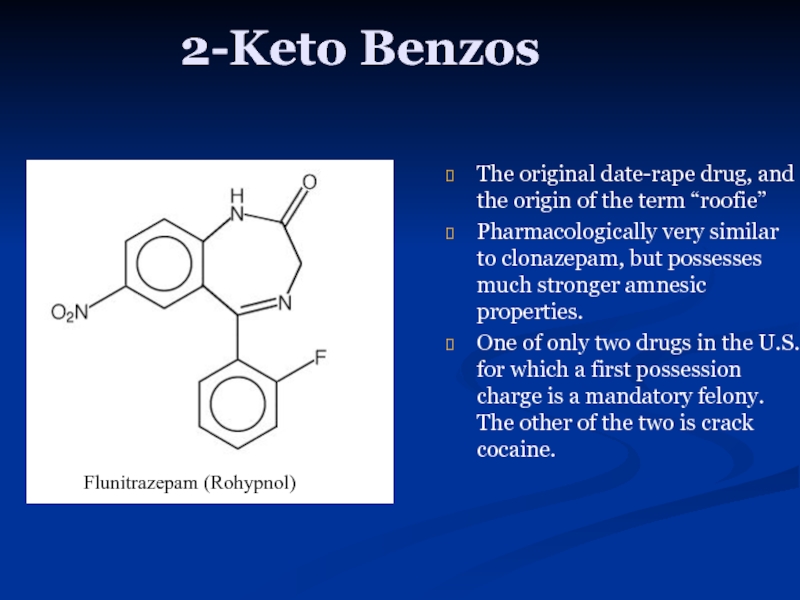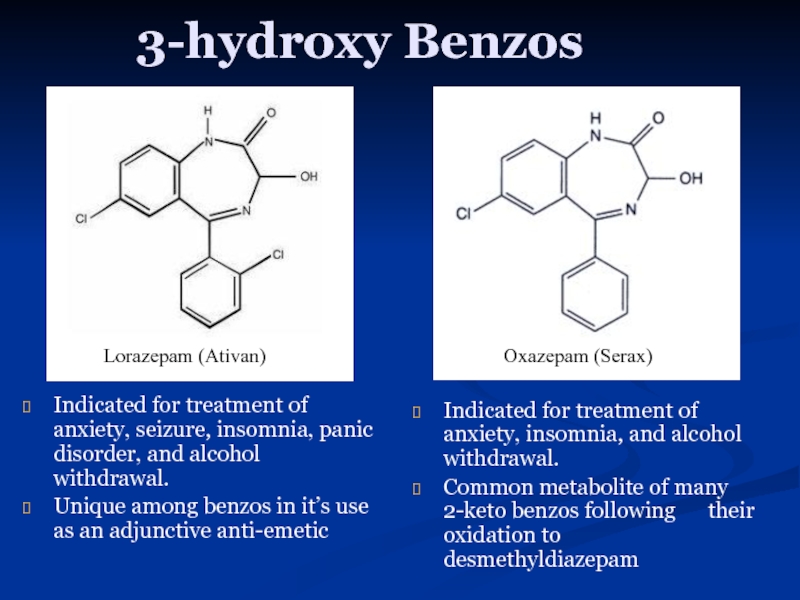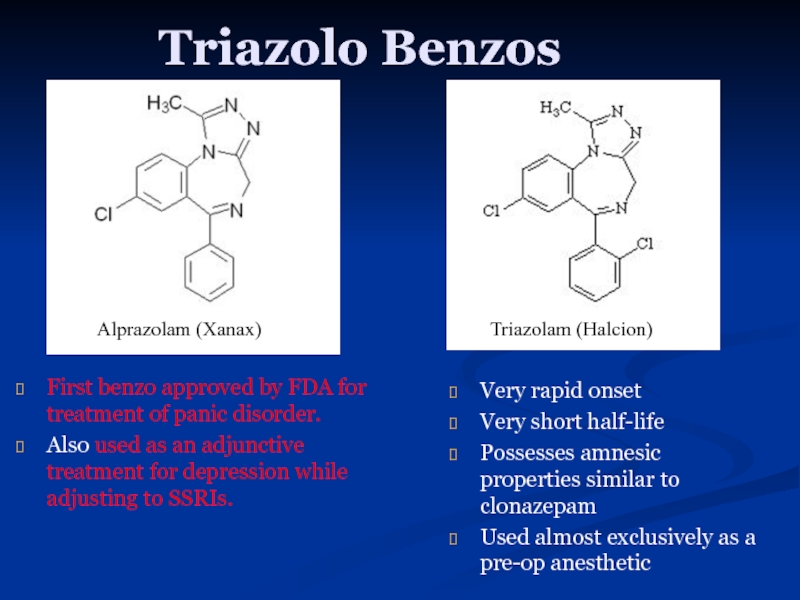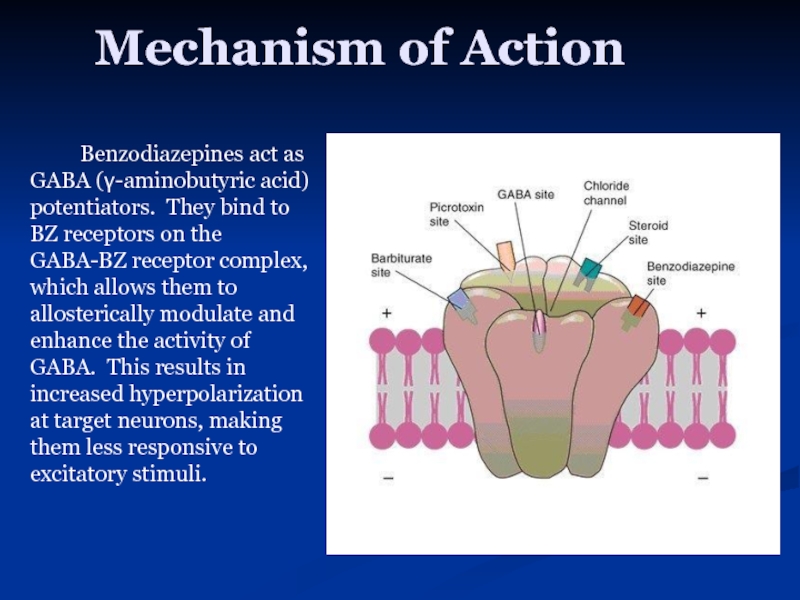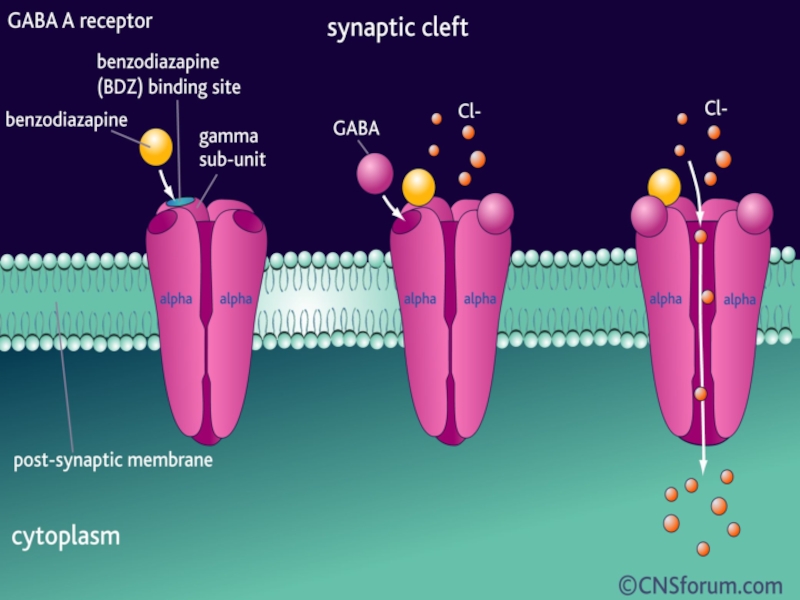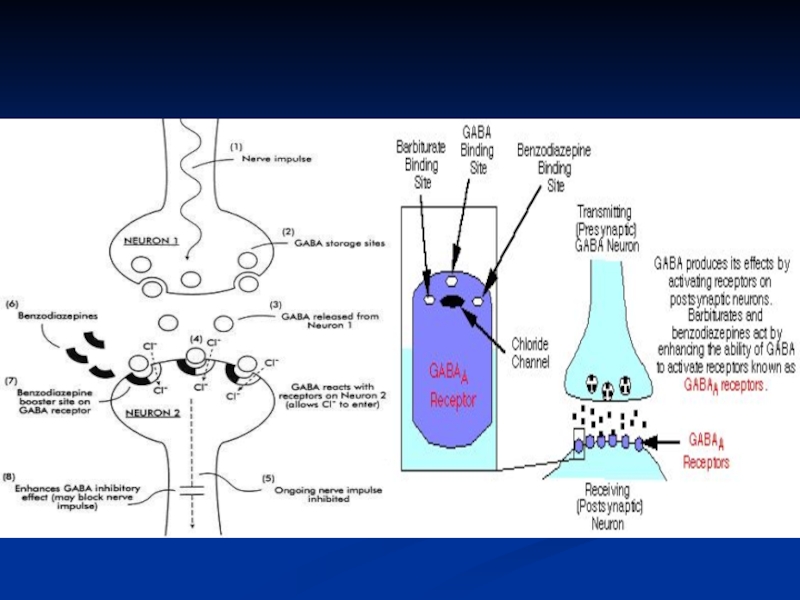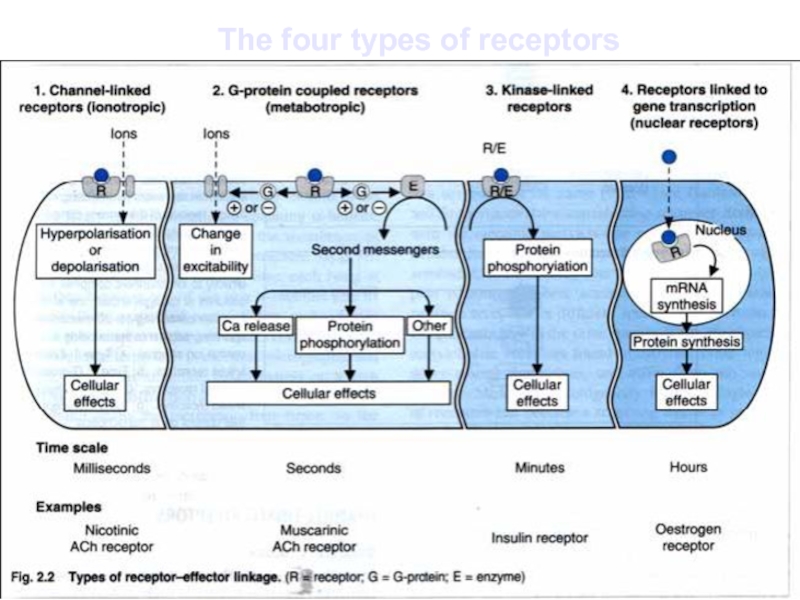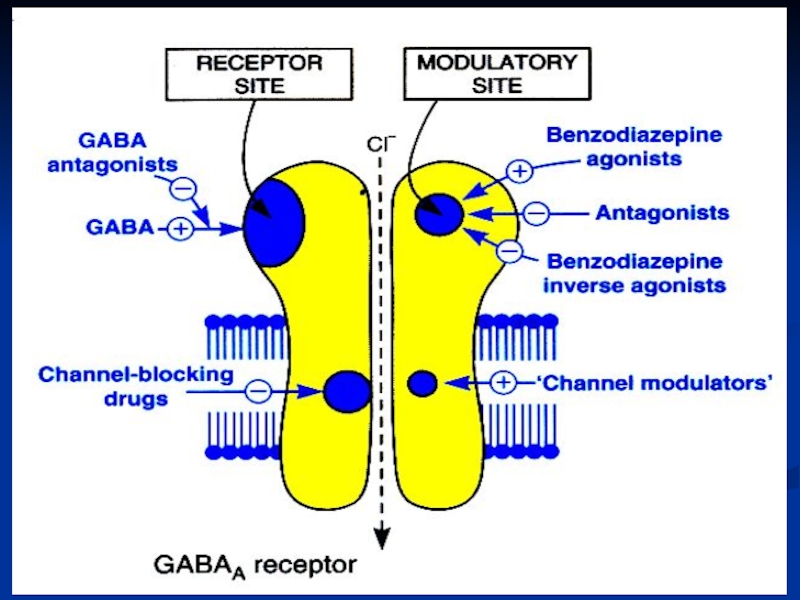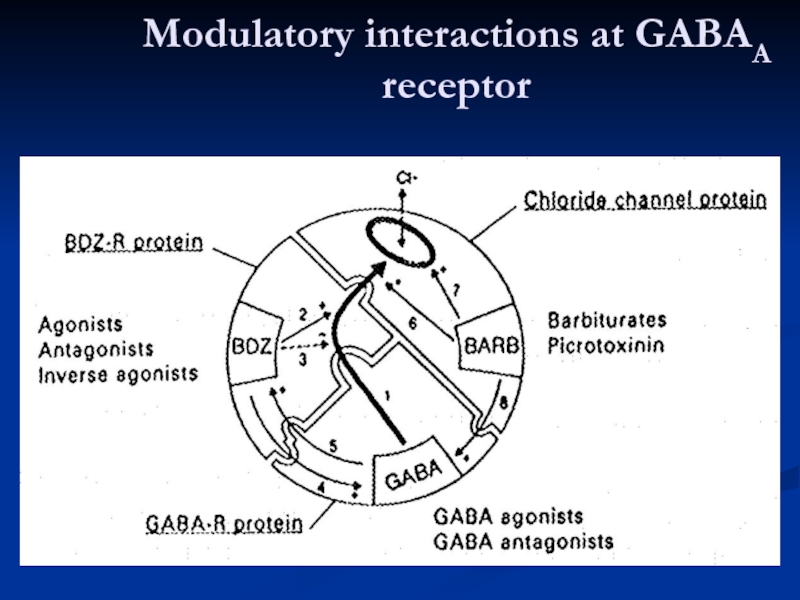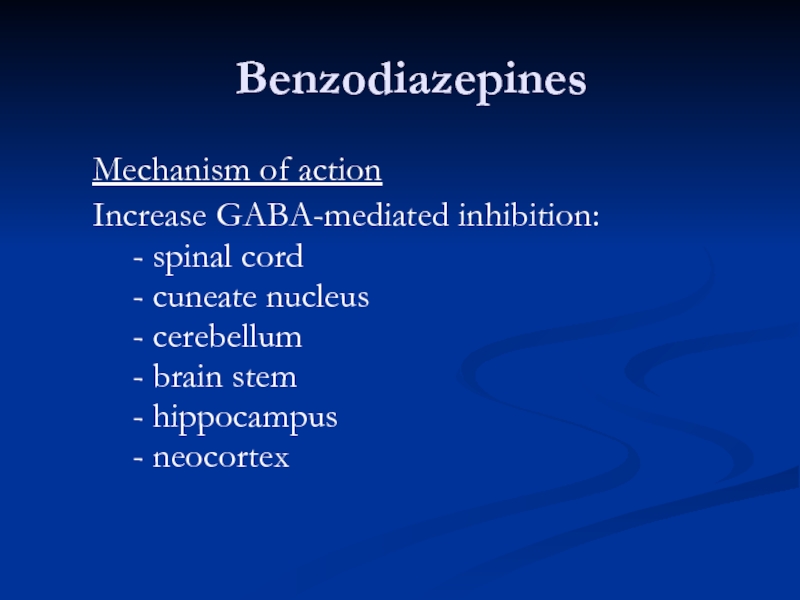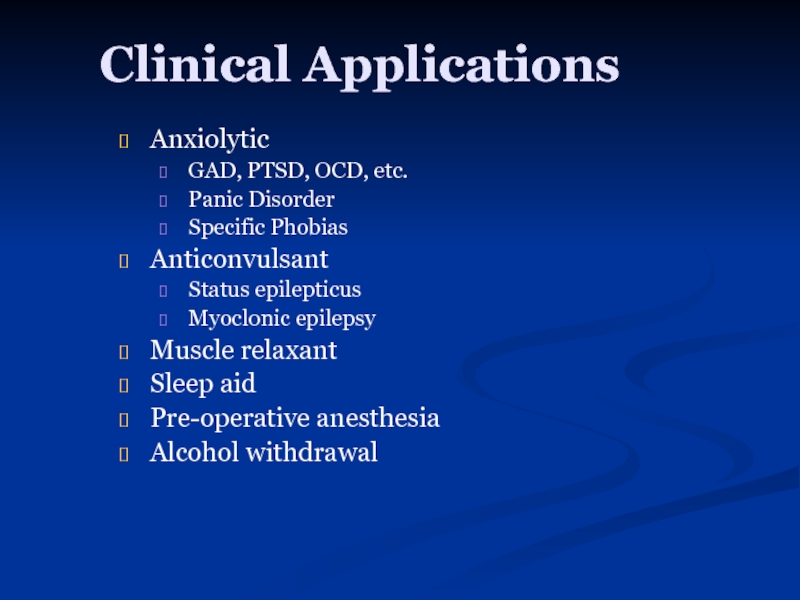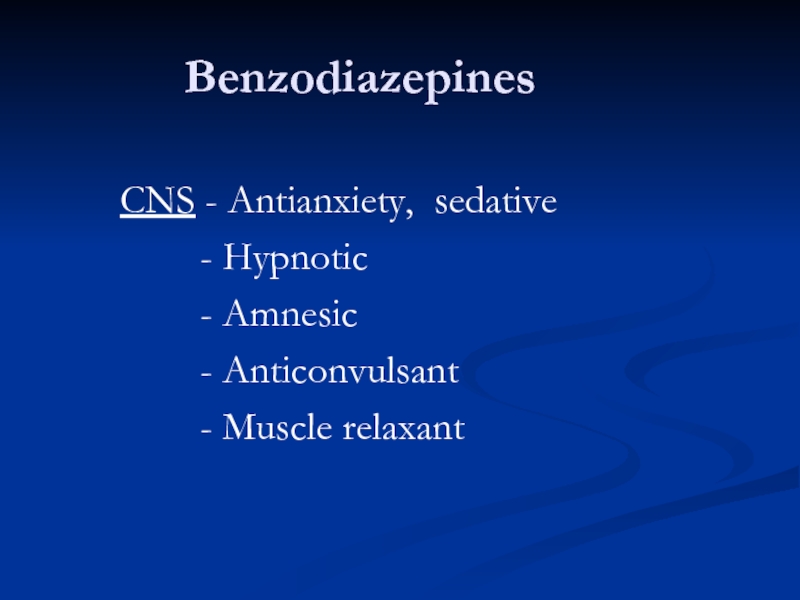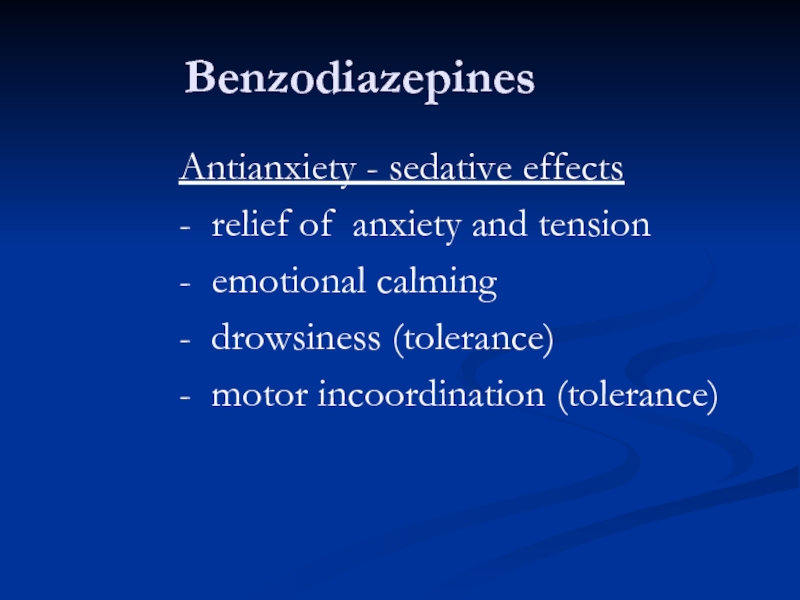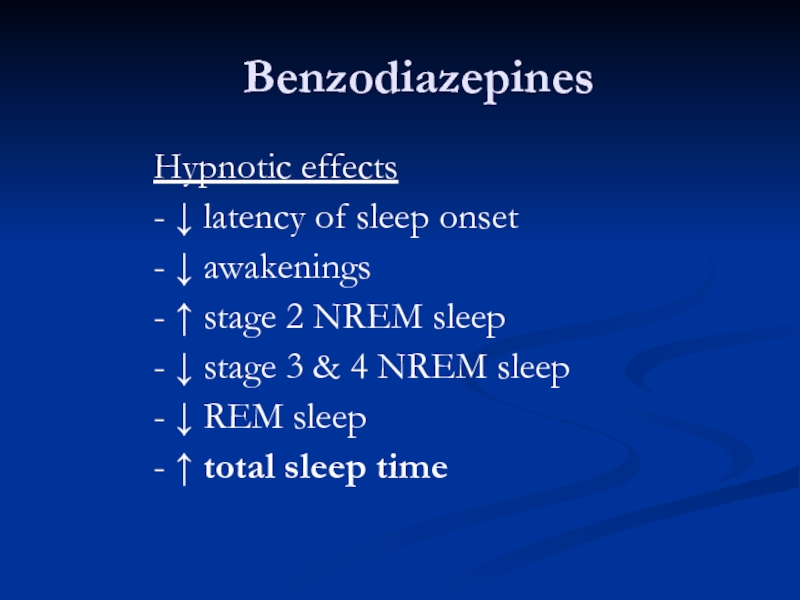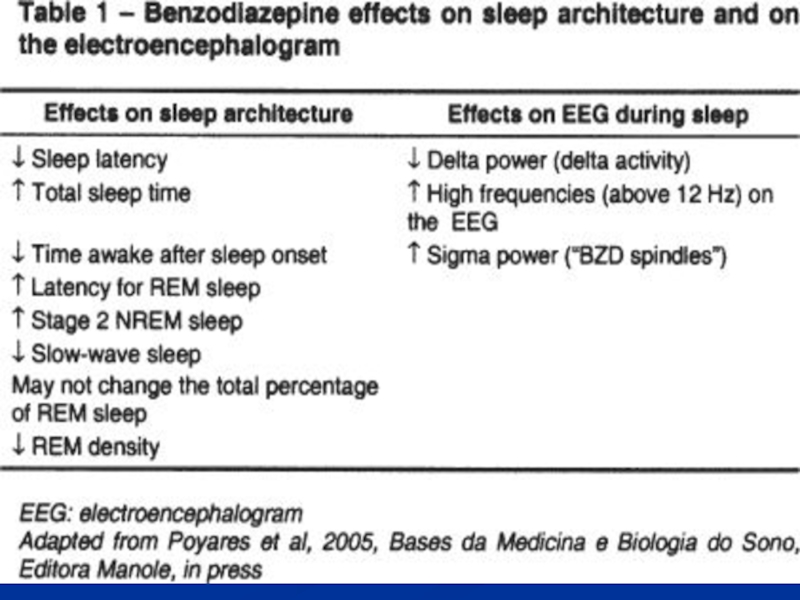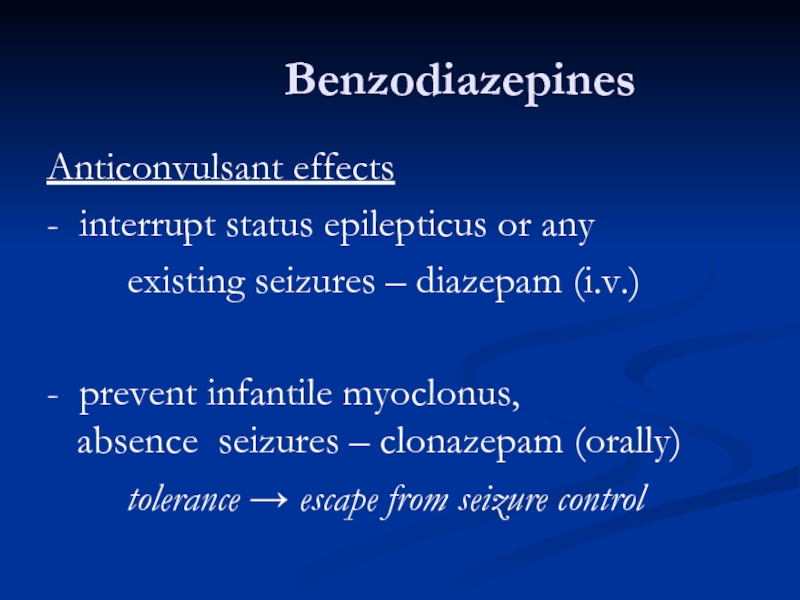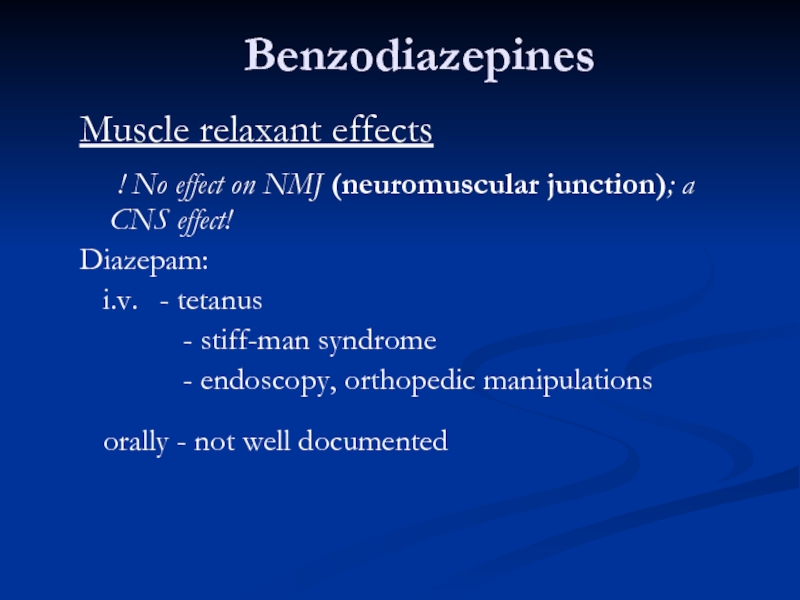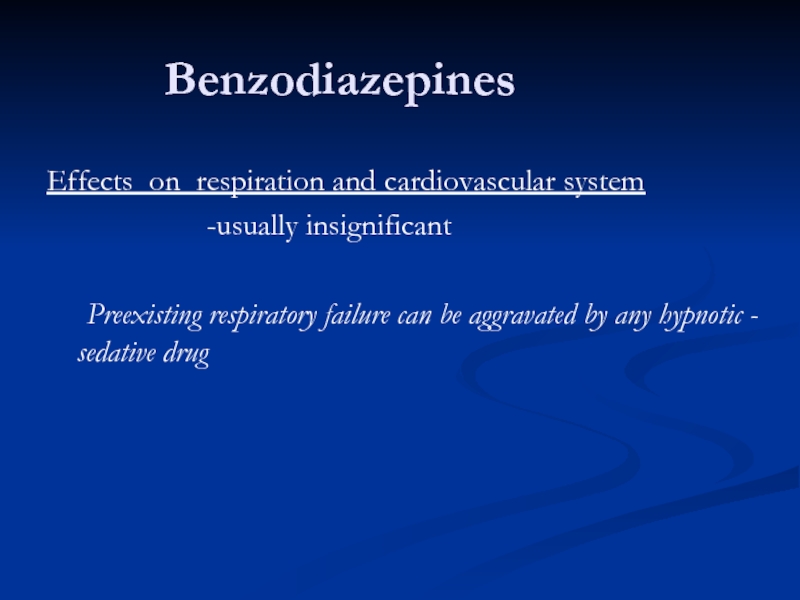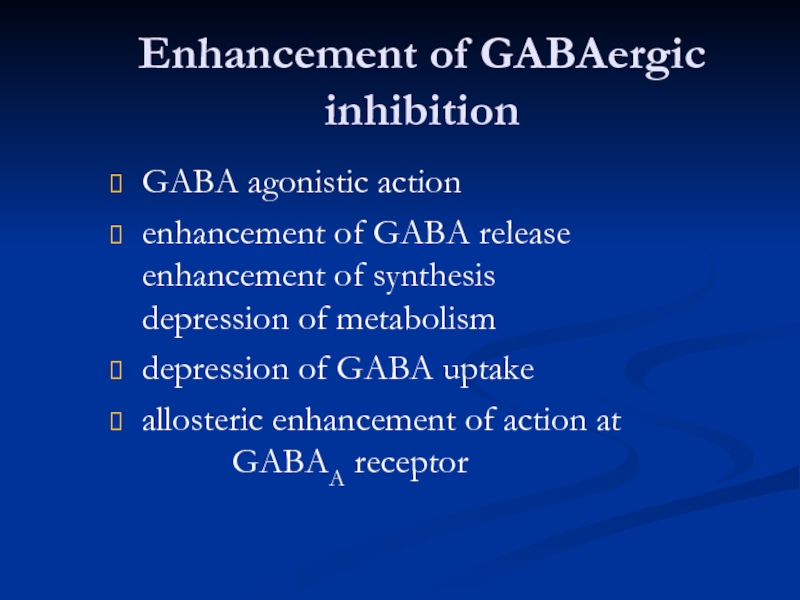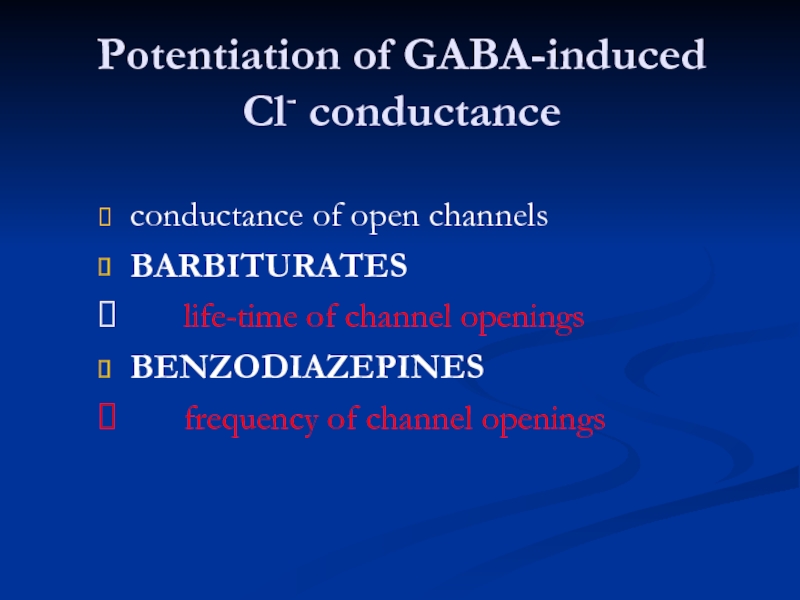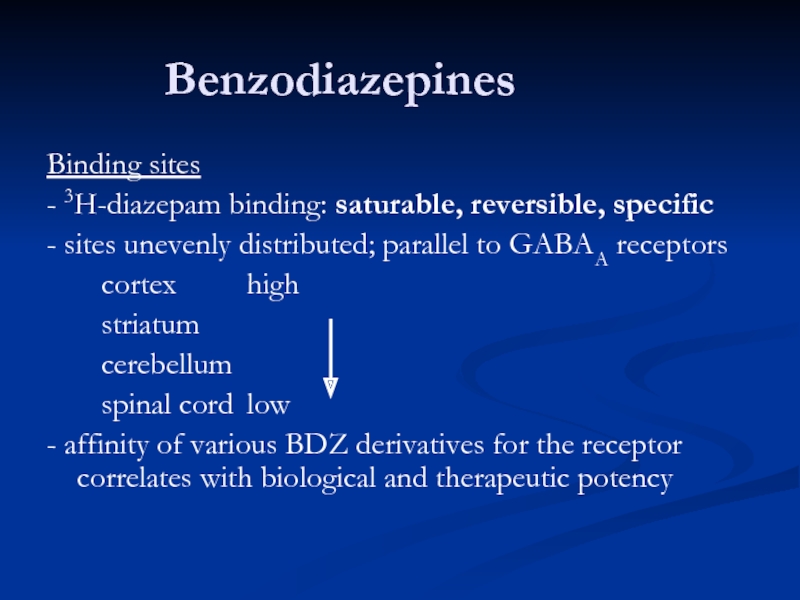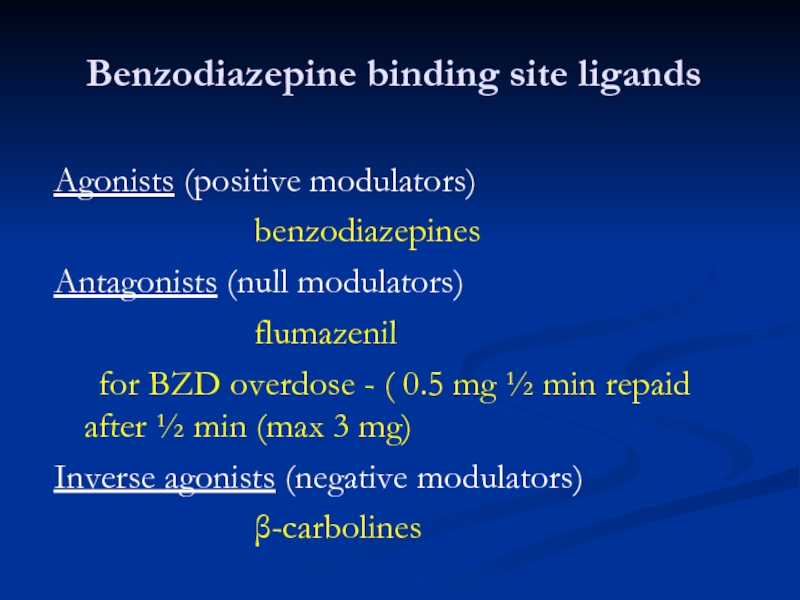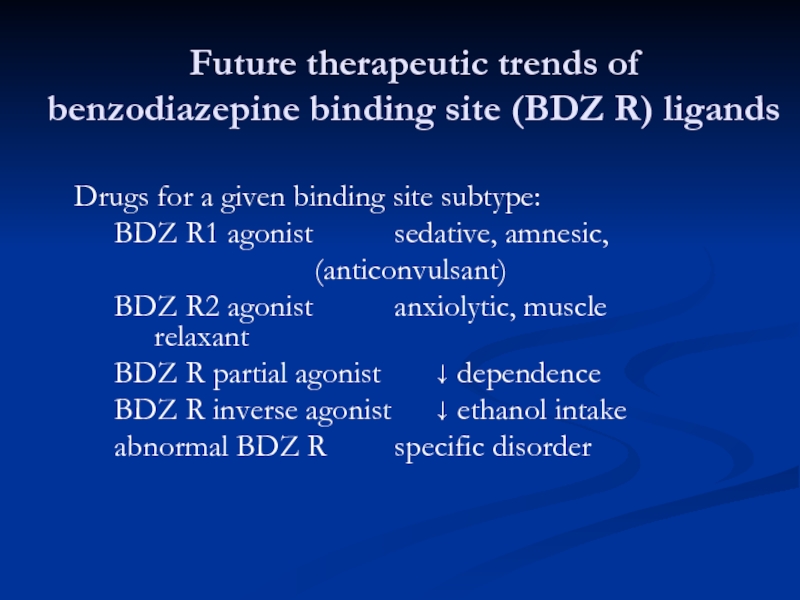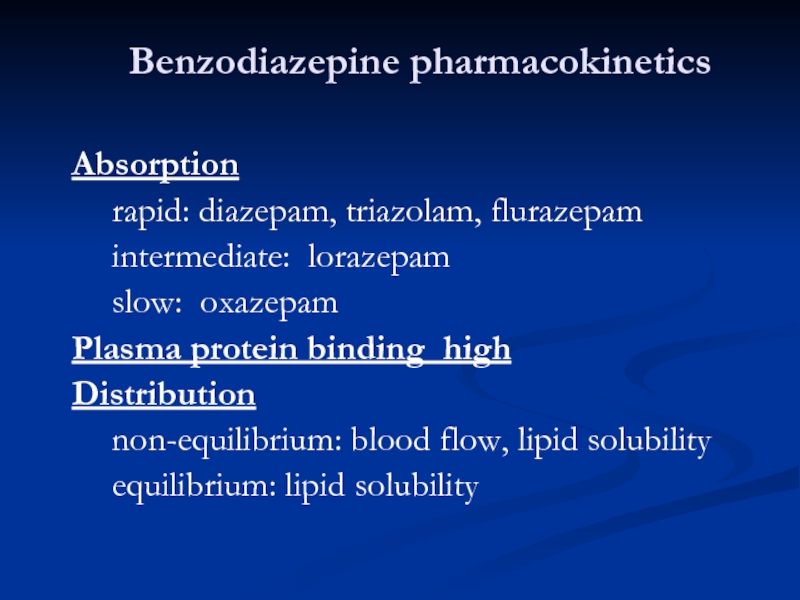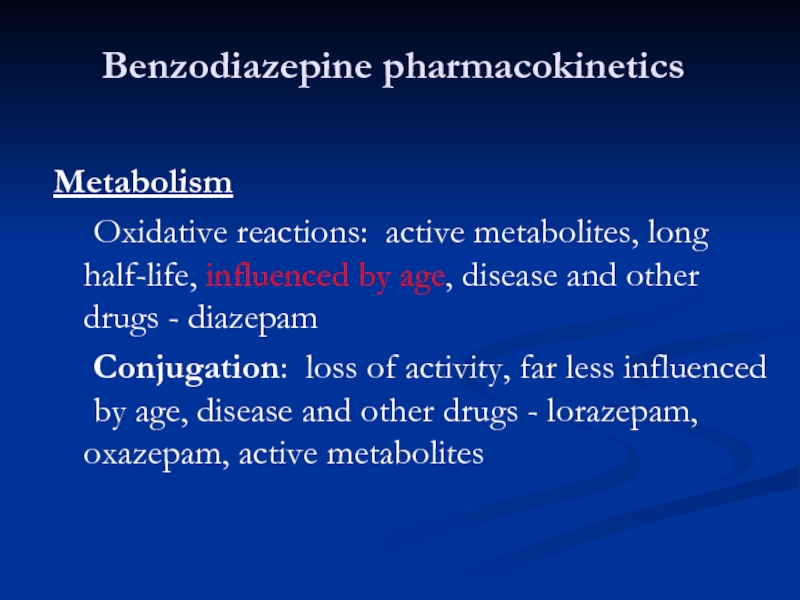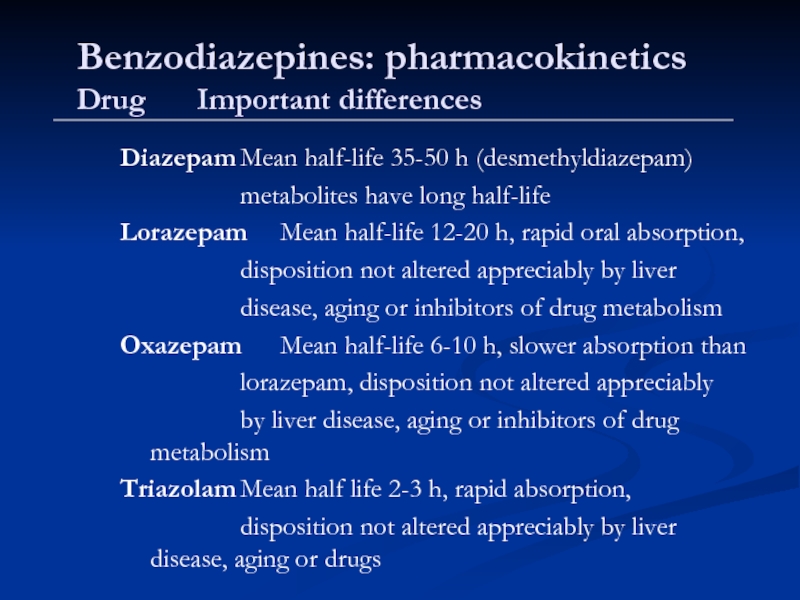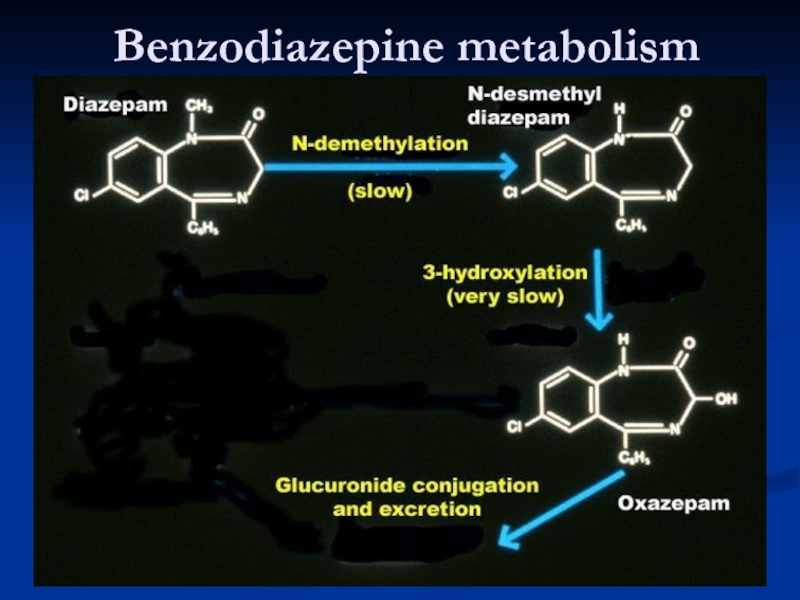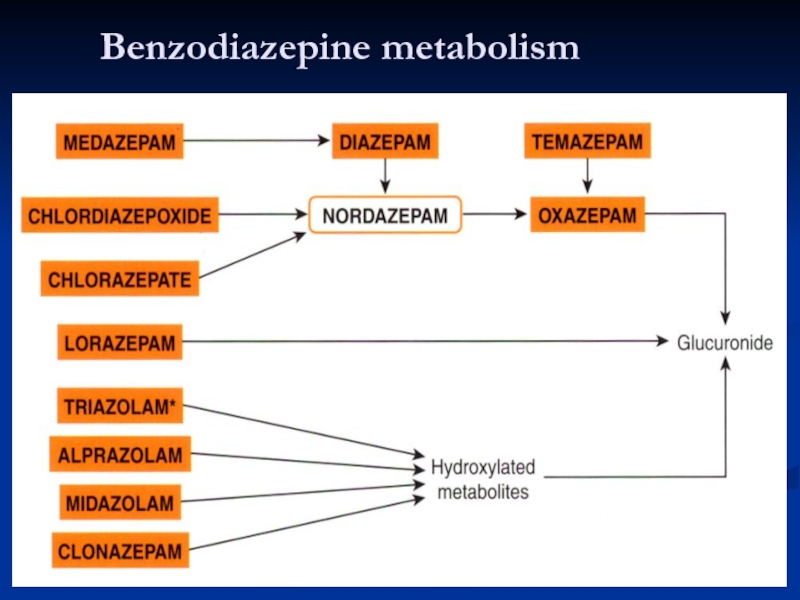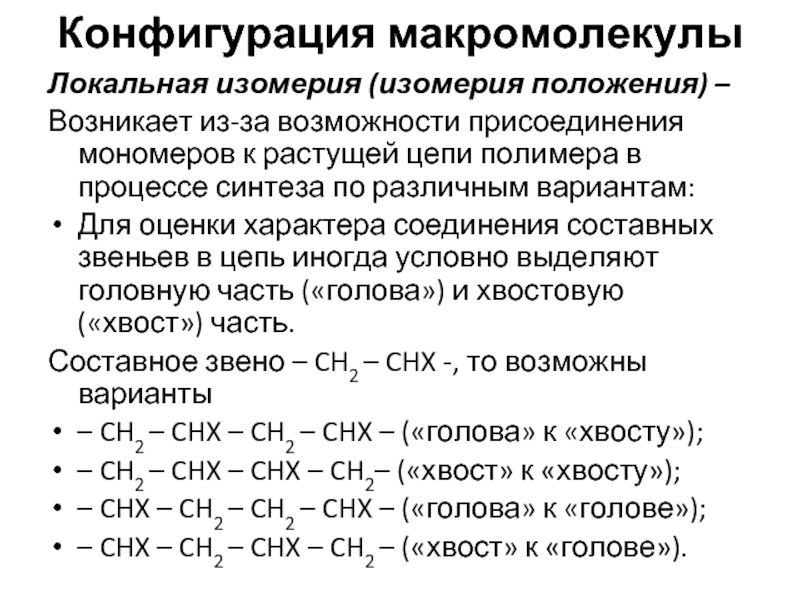- Главная
- Разное
- Дизайн
- Бизнес и предпринимательство
- Аналитика
- Образование
- Развлечения
- Красота и здоровье
- Финансы
- Государство
- Путешествия
- Спорт
- Недвижимость
- Армия
- Графика
- Культурология
- Еда и кулинария
- Лингвистика
- Английский язык
- Астрономия
- Алгебра
- Биология
- География
- Детские презентации
- Информатика
- История
- Литература
- Маркетинг
- Математика
- Медицина
- Менеджмент
- Музыка
- МХК
- Немецкий язык
- ОБЖ
- Обществознание
- Окружающий мир
- Педагогика
- Русский язык
- Технология
- Физика
- Философия
- Химия
- Шаблоны, картинки для презентаций
- Экология
- Экономика
- Юриспруденция
Anti-anxiety drugs презентация
Содержание
- 2. Anti-anxiety drugs Prof. Anatoly Kreinin MD, PhD
- 3. תרופות נוגדות חרדה.. Benzodiazepines (BZDs) Buspirone Antihistamines Antidepressants Anti-epileptic drugs (AEDs) Atypical antipsychotics
- 4. תרופות שלא משומשות יותר לחרדה Typical antipsychotics (e.g., thioridazineמלריל -) Barbiturates
- 5. Benzodiazepines (BZDs) The Problem About 2 per
- 6. History of benzodiazepines 1912 phenobarbital 1961 chlordiazepoxide
- 7. BZD Alprazolam (Xanax) Clonazepam (clonex) Diazepam (Valium,Assival)
- 8. History The first benzodiazepine (benzo) was synthesized
- 9. Structure 2-Keto Benzos Some administered as prodrug
- 10. 2-Keto Benzos First isolated benzo Oxidized
- 11. 2-Keto Benzos Longest half-life of any benzo
- 12. 2-Keto Benzos The original date-rape drug, and
- 13. 3-hydroxy Benzos Indicated for treatment of anxiety,
- 14. Triazolo Benzos First benzo approved by FDA
- 15. Mechanism of Action Benzodiazepines act as GABA
- 18. The four types of receptors
- 20. Modulatory interactions at GABAA receptor
- 21. Benzodiazepines Mechanism of action Increase GABA-mediated inhibition:
- 22. Clinical Applications Anxiolytic GAD, PTSD, OCD, etc.
- 23. Benzodiazepines CNS - Antianxiety, sedative - Hypnotic - Amnesic - Anticonvulsant - Muscle relaxant
- 24. Benzodiazepines Antianxiety - sedative effects - relief
- 25. Benzodiazepines Hypnotic effects - ↓ latency of
- 27. Benzodiazepines Anticonvulsant effects - interrupt status epilepticus
- 28. Benzodiazepines Muscle relaxant effects !
- 29. Benzodiazepines Effects on respiration and cardiovascular system
- 30. Enhancement of GABAergic inhibition GABA agonistic action
- 31. Potentiation of GABA-induced Cl- conductance conductance
- 32. Benzodiazepines Binding sites - 3H-diazepam binding: saturable,
- 33. Benzodiazepine binding site ligands Agonists (positive modulators)
- 34. Future therapeutic trends of benzodiazepine binding site
- 35. Benzodiazepine pharmacokinetics Absorption rapid: diazepam, triazolam, flurazepam
- 36. Benzodiazepine pharmacokinetics Metabolism Oxidative reactions: active metabolites,
- 37. Benzodiazepines: pharmacokinetics Drug
- 38. Benzodiazepine metabolism
- 39. Benzodiazepine metabolism
Слайд 2Anti-anxiety drugs
Prof. Anatoly Kreinin MD, PhD
Director of Psychiatric Department, Maale Carmel
Слайд 3תרופות נוגדות חרדה..
Benzodiazepines (BZDs)
Buspirone
Antihistamines
Antidepressants
Anti-epileptic drugs (AEDs)
Atypical antipsychotics
Слайд 5Benzodiazepines (BZDs)
The Problem
About 2 per cent of the adult population of
Surveys of general practices show that there are over 180 long-term prescribed users per general practice.
Despite repeated recommendations to limit benzodiazepines to short-term use (2– 4 weeks), doctors in the UK and worldwide are still prescribing them for months or years.
Dependence upon prescribed benzodiazepines is now recognised as a major clinical problem and the National Performance Assessment Framework for the NHS makes it a national priority to reduce this within each health board area.
Слайд 6History of benzodiazepines
1912 phenobarbital
1961 chlordiazepoxide (Librium): 1st BDZ
1963 diazepam
1970 highest level
1980s reduced use because of social concerns
Слайд 7BZD
Alprazolam (Xanax)
Clonazepam (clonex)
Diazepam (Valium,Assival)
Lorazepam (Lorivan)
Oxazepam (Vaben)
Clorazepate (Tranxal)
Chlordiazepoxide (Librium)
Слайд 8History
The first benzodiazepine (benzo) was synthesized by an Austrian scientist -
The new compound’s potential as a pharmaceutical was not initially recognized, however, Dr. Sternbach’s persistent research eventually uncovered it’s efficacy as a tranquilizer.
In 1959, chlordiazepoxide (Librium) was introduced as the first of many benzos to come.
Just four years later, in 1963, diazepam (Valium) came on the market.
Clinicians quickly recognized the potential of benzos as a safer alternative to the barbiturate class of anxiolytics.
Слайд 9Structure
2-Keto Benzos
Some administered as prodrug
All have active metabolites (commonly desmethyldiazepam)
Long half-lives
3-hydroxy Benzos
No active metabolites
Not metabolized in the liver
Intermediate half-lives (most ~ 8-20 hours)
Triazolo Benzos
Additional heterocyclic ring attached at the 1 and 2 positions
Some active metabolites
Short to intermediate half-lives (anywhere from 3-14 hours)
Слайд 102-Keto Benzos
First isolated benzo
Oxidized to desmethyldiazepam in the liver
Indicated for
Most prolific and versatile benzo
Indicated for treatment of anxiety, seizure, muscle tension, insomnia, and alcohol withdrawal
Chlordiazepoxide (Librium)
Diazepam (Valium)
Слайд 112-Keto Benzos
Longest half-life of any benzo (~ 40-250 hours)
Indicated primarily for
High potentcy (~ 20 times stronger per miliigram than diazepam)
Causes moderate anterograde amnesia
Indicated for treatment of anxiety, also a highly effective anticonvulsant
Flurazepam (Dalmane)
Clonazepam (Klonopin)
Слайд 122-Keto Benzos
The original date-rape drug, and the origin of the term
Pharmacologically very similar to clonazepam, but possesses much stronger amnesic properties.
One of only two drugs in the U.S. for which a first possession charge is a mandatory felony. The other of the two is crack cocaine.
Flunitrazepam (Rohypnol)
Слайд 133-hydroxy Benzos
Indicated for treatment of anxiety, seizure, insomnia, panic disorder, and
Unique among benzos in it’s use as an adjunctive anti-emetic
Indicated for treatment of anxiety, insomnia, and alcohol withdrawal.
Common metabolite of many 2-keto benzos following their oxidation to desmethyldiazepam
Lorazepam (Ativan)
Oxazepam (Serax)
Слайд 14Triazolo Benzos
First benzo approved by FDA for treatment of panic disorder.
Also
Very rapid onset
Very short half-life
Possesses amnesic properties similar to clonazepam
Used almost exclusively as a pre-op anesthetic
Alprazolam (Xanax)
Triazolam (Halcion)
Слайд 15Mechanism of Action
Benzodiazepines act as GABA (γ-aminobutyric acid) potentiators. They bind
Слайд 21Benzodiazepines
Mechanism of action
Increase GABA-mediated inhibition:
- spinal cord
- cuneate nucleus
- cerebellum
- brain
- hippocampus
- neocortex
Слайд 22Clinical Applications
Anxiolytic
GAD, PTSD, OCD, etc.
Panic Disorder
Specific Phobias
Anticonvulsant
Status epilepticus
Myoclonic epilepsy
Muscle relaxant
Sleep aid
Pre-operative
Alcohol withdrawal
Слайд 23Benzodiazepines
CNS - Antianxiety, sedative
- Hypnotic
- Amnesic
- Anticonvulsant
- Muscle relaxant
Слайд 24Benzodiazepines
Antianxiety - sedative effects
- relief of anxiety and tension
- emotional calming
-
- motor incoordination (tolerance)
Слайд 25Benzodiazepines
Hypnotic effects
- ↓ latency of sleep onset
- ↓ awakenings
- ↑ stage
- ↓ stage 3 & 4 NREM sleep
- ↓ REM sleep
- ↑ total sleep time
Слайд 27Benzodiazepines
Anticonvulsant effects
- interrupt status epilepticus or any
existing seizures
- prevent infantile myoclonus, absence seizures – clonazepam (orally)
tolerance → escape from seizure control
Слайд 28Benzodiazepines
Muscle relaxant effects
! No effect on NMJ (neuromuscular junction);
Diazepam:
i.v. - tetanus
- stiff-man syndrome
- endoscopy, orthopedic manipulations
orally - not well documented
Слайд 29Benzodiazepines
Effects on respiration and cardiovascular system
-usually insignificant
Preexisting respiratory failure can be
Слайд 30Enhancement of GABAergic inhibition
GABA agonistic action
enhancement of GABA release enhancement of
depression of GABA uptake
allosteric enhancement of action at GABAA receptor
Слайд 31Potentiation of GABA-induced
Cl- conductance
conductance of open channels
BARBITURATES
life-time
BENZODIAZEPINES
frequency of channel openings
Слайд 32Benzodiazepines
Binding sites
- 3H-diazepam binding: saturable, reversible, specific
- sites unevenly distributed; parallel
cortex high
striatum
cerebellum
spinal cord low
- affinity of various BDZ derivatives for the receptor correlates with biological and therapeutic potency
Слайд 33Benzodiazepine binding site ligands
Agonists (positive modulators)
benzodiazepines
Antagonists (null modulators)
flumazenil
for
Inverse agonists (negative modulators)
β-carbolines
Слайд 34Future therapeutic trends of
benzodiazepine binding site (BDZ R) ligands
Drugs for a
BDZ R1 agonist sedative, amnesic,
(anticonvulsant)
BDZ R2 agonist anxiolytic, muscle relaxant
BDZ R partial agonist ↓ dependence
BDZ R inverse agonist ↓ ethanol intake
abnormal BDZ R specific disorder
Слайд 35Benzodiazepine pharmacokinetics
Absorption
rapid: diazepam, triazolam, flurazepam
intermediate: lorazepam
slow: oxazepam
Plasma protein binding high
Distribution
non-equilibrium: blood
equilibrium: lipid solubility
Слайд 36Benzodiazepine pharmacokinetics
Metabolism
Oxidative reactions: active metabolites, long half-life, influenced by age, disease
Conjugation: loss of activity, far less influenced by age, disease and other drugs - lorazepam, oxazepam, active metabolites
Слайд 37 Benzodiazepines: pharmacokinetics
Drug Important differences
Diazepam Mean half-life 35-50
metabolites have long half-life
Lorazepam Mean half-life 12-20 h, rapid oral absorption,
disposition not altered appreciably by liver
disease, aging or inhibitors of drug metabolism
Oxazepam Mean half-life 6-10 h, slower absorption than
lorazepam, disposition not altered appreciably
by liver disease, aging or inhibitors of drug metabolism
Triazolam Mean half life 2-3 h, rapid absorption,
disposition not altered appreciably by liver disease, aging or drugs


